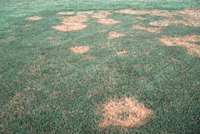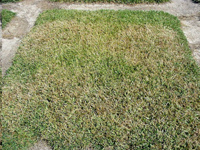Crepe Myrtle Pruning. Stop Committing ‘Crepe Murder’.
Each winter season, people all over the South start butchering crepe myrtle trees. One guy starts, then other neighbors and landscaping crews follow suit, chopping plants down to stubs. Do these people know what they are doing? Cutting down trees! Are any other trees destined to be cut back so severely and denied their true potential? Why do so many people become serial “Crape Murderers” as this act has come to be called?
Each winter Steve Bender, who writes for Southern Living Magazine, tries to put a stop to the slaughtering and provide education for the proper way to prune a crepe myrtle.
He explains the objectives of pruning a crepe myrtle tree: to help maintain its natural sculptural form, produce strong branches that hold flowers upright, and open up its center to reveal the smooth, multi-toned bark that forms on mature trunks and branches. Usually, instead, the plants end up as stumps or looking like they came out of a Dr. Seuss book—not at all proper for a Southern landscape.
Crepe myrtles like to bloom on new wood, but not all plants need, or get, pruned—and they still bloom beautifully. If a plant MUST be pruned, use these guidelines:
* Prune in late winter. February is ideal.
* Remove suckers at the base, crossing or rubbing branches, and branches growing inward toward the center of the plant.
* As the tree grows, gradually remove all side branches from the main trunks up to a height of 5 feet or so.
* Cut back to another branch, to just above an outward-facing bud on a branch, or to the branch collar (a swollen area where the branch joins the trunk). Never leave lone or clustered stubs.
* Try to remove unwanted branches before they get thicker than a pencil.
* It’s okay, but unnecessary, to cut off old seedheads.
Southerners across the South think that because their neighbor prunes his crepe myrtle, they should, too. Or a homeowner has a landscape company who just prunes the crepe myrtles every year—tell them to STOP COMMITTING CREPE MURDER.
Or maybe the plant has outgrown it’s current location, which just means the wrong variety was planted in the wrong location. The Petite series only gets up to 12 feet tall and there are other varieties that grow into large shrubs.
With proper knowledge and training, crepe myrtles can be trimmed for maximum growth and blooming potential. If a plant is mature enough, it most likely could (and should) be left alone. If “Crepe Murder ” is happening to your Crepe Myrtle trees, please consult with a true landscaping professional to determine the best method for pruning the Crepe Myrtle trees in your personal landscape and prevent future massacres so that your trees can look like this!
Properly-pruned Crepe Myrtles






